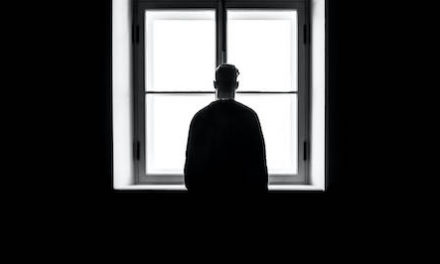The mental health crisis that faces our society undoubtedly falls under the category of a daunting global challenge. In the short term since its prevalence has become less stigmatised, coping mechanisms such as counselling or verbalising emotions have become commonplace. However, in the long term, there are more remedial avenues that are just beginning to be explored, such as how the spaces we live in and the architecture that surrounds us can influence our emotions.
According to the 2021 Census, 16% of adults in the UK suffer from depression- an increase of 6% since pre pandemic levels.
This coincides with the increasing amount of time our nation has spent inside; we have worked from home, learnt from home and stayed at home.
And finally, an additional correlating trend is the renovation revolution that this has provoked. According to a survey released by Yahoo Finance UK, June 2021, the pandemic had caused Brits to spend a staggering £110.3 billion on home improvements.
This is because for the first time, homeowners realised that the spaces they were living in didn’t actually meet their needs. No longer would their homes only serve as a dormitory, but a place they must enjoy being.
Seeing as natural light exposure has been proven to increase serotonin and benefit mental health (Healthline Magazine), windows are a crucial architectural feature.
UK building regulations state that habitable rooms must have a window for safety, ventilation and general wellbeing. Even so, our nation no longer loves the conservatory: a typical daylight haven and window sanctuary. In 2006, 250,000 conservatories were built compared to just 77,000 in 2017 (DoubleGlazingBlogger) testifying to their declining popularity. Whilst the classic conservatory is no longer deemed fashionable, it did tick the box for natural light intake. But there is an innovative replacement solution- Biophilic design: an architectural method proposed by Kellert et al. (2008) that includes natural lighting, ventilation and landscape features to create a more enjoyable built environment.
Biophilia is literally defined as the deeply ingrained love of nature that human beings possess and is an ideal way of influencing people’s moods by adapting their environment. It is space efficient, sustainable and can be implemented anywhere. Whether it be indirectly through images of nature incorporated into wall art, or directly building with organic materials like stone and wood. One of the best examples is the greening metropolis of Singapore, fittingly carrying the motto, “City in a Garden”. It is so rich in biophilic design that green space occupies 47% of all its land, compared to just 13% in San Francisco or even 10% in Paris (World Cities Forum), pointing to the conclusion that perhaps we need to look beyond the western world for leading architectural inspiration.
A study by Harvard University students (Yin et al., (2018)) compared blood pressure and heart rate of participants in an office building with and without biophilic elements. They recorded that the biophilic environment decreased participants blood pressure and increased positive emotions.
Although more research is needed, it is axiomatic that we are more content when our surroundings nurture us, a response that is hardwired into us as humans.
By delving deeper into neuro architecture and exploiting humans’ innate love of nature, we can design a world that provides us with constant exposure to a therapeutic and ameliorative atmosphere everywhere we go. Long term collaborative thinking between disciplines, namely architecture and psychology, and pinpointing the delicate balance between art and science will enable us to adapt spaces positively to further combat the mental health crisis.
References
Census 2021, Cost of living and depression in adults, Great Britain
Suban Abdulla (June 9, 2021). “Brits spend £110bn on home improvements amid pandemic property boom”. Yahoo Finance. Available at https://uk.news.yahoo.com/property-coronavirus-housing-market-boom-home-improvements-stamp-duty-holiday-rishi-sunak-
Timothy J. Legg, Rachel Nall (April 1, 2019) “Sunlight and Serotonin” Healthline Magazine. Available at https://www.healthline.com/health/depression/benefits-sunlight#mental-health
DGB Magazine (April 16, 2018) “Just 77,000 new conservatories were built last year” Available at https://www.doubleglazingblogger.com/2018/04/just-77000-brand-new-conservatories-were-built-last-year/
HM Government (April 6, 2013) Building Regulation B1, Fire Safety,
Stephen R. Kellert, Elizabeth F. Calabrese, (2015) “The Practise of Biophilic Design”
“% of Public Green Space (parks and gardens)” – World Cities Culture Forum. Available at http://www.worldcitiescultureforum.com/data/of-public-green-space-parks-and-gardens
Jie Yin, Shihao Zhu, Piers MacNaughton, Joseph G. Allen, John D. Spengler, (2018) “Physiological and cognitive performance of exposure to biophilic indoor environment”, Building and Environment, Elsevier
Sir Winston Churchill, House of Lords, 28/10/1943




